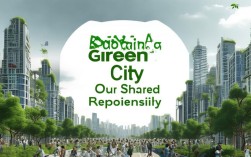In today's interconnected world, resource scarcity has emerged as a pressing issue affecting economies, ecosystems, and everyday life. From dwindling freshwater supplies to the depletion of fossil fuels, the strain on natural resources demands immediate attention. Addressing this challenge requires a combination of innovation, policy changes, and individual responsibility.

Understanding Resource Scarcity
Resource scarcity occurs when demand exceeds supply, leading to shortages that disrupt industries and communities. Several factors contribute to this imbalance:
- Population Growth – The global population continues to expand, increasing consumption of food, water, and energy.
- Industrialization – Rapid economic development accelerates resource extraction, often without sustainable management.
- Climate Change – Erratic weather patterns reduce agricultural yields and strain water resources.
- Waste and Inefficiency – Poor resource management leads to excessive waste, further depleting finite supplies.
Without intervention, these trends could lead to severe economic instability and geopolitical conflicts over essential resources.
Strategies for Mitigating Resource Shortages
Promoting Renewable Energy
Fossil fuels, once abundant, are now a major concern due to their environmental impact and limited availability. Transitioning to renewable energy sources—such as solar, wind, and hydropower—can reduce dependence on non-renewable resources while lowering carbon emissions. Governments and businesses must invest in infrastructure and incentives to accelerate this shift.

Improving Water Conservation
Freshwater scarcity affects nearly 40% of the global population. Solutions include:
- Smart Irrigation – Precision agriculture minimizes water waste in farming.
- Desalination Technology – Converting seawater into potable water can supplement freshwater supplies.
- Public Awareness Campaigns – Encouraging households to reduce water usage through efficient appliances and mindful habits.
Circular Economy Practices
A linear economy—where products are made, used, and discarded—fuels resource depletion. A circular economy emphasizes reuse, recycling, and sustainable design. Key approaches include:
- Product Lifecycle Extensions – Designing durable goods that can be repaired or upgraded.
- Waste-to-Resource Innovations – Converting industrial byproducts into new materials.
- Corporate Responsibility – Businesses adopting zero-waste policies and sustainable sourcing.
Sustainable Agriculture
Food production consumes vast amounts of land, water, and energy. Sustainable farming methods can optimize resource use:

- Vertical Farming – Growing crops in stacked layers reduces land and water requirements.
- Regenerative Agriculture – Techniques like crop rotation and no-till farming improve soil health.
- Reducing Food Waste – Nearly one-third of food produced is wasted; better storage and distribution can mitigate losses.
Policy and International Cooperation
Governments play a crucial role in regulating resource use and fostering innovation. Effective measures include:
- Subsidies for Green Technologies – Financial incentives for renewable energy and sustainable practices.
- Strict Environmental Regulations – Enforcing limits on pollution and over-extraction.
- Global Partnerships – Collaborative efforts, such as the Paris Agreement, address cross-border resource challenges.
The Role of Individuals
While systemic change is essential, individual actions collectively make a difference. Simple steps include:
- Reducing Energy Consumption – Using energy-efficient appliances and minimizing unnecessary usage.
- Supporting Sustainable Brands – Choosing companies committed to ethical sourcing and eco-friendly practices.
- Advocating for Change – Engaging in community initiatives and pressuring policymakers to prioritize sustainability.
Resource scarcity is not an insurmountable problem, but it requires urgent, coordinated efforts. By embracing innovation, responsible consumption, and global cooperation, we can secure a sustainable future for generations to come.

The path forward is clear: efficiency, conservation, and forward-thinking policies must guide our approach to resource management. Only through collective action can we ensure that scarcity does not define our future.


